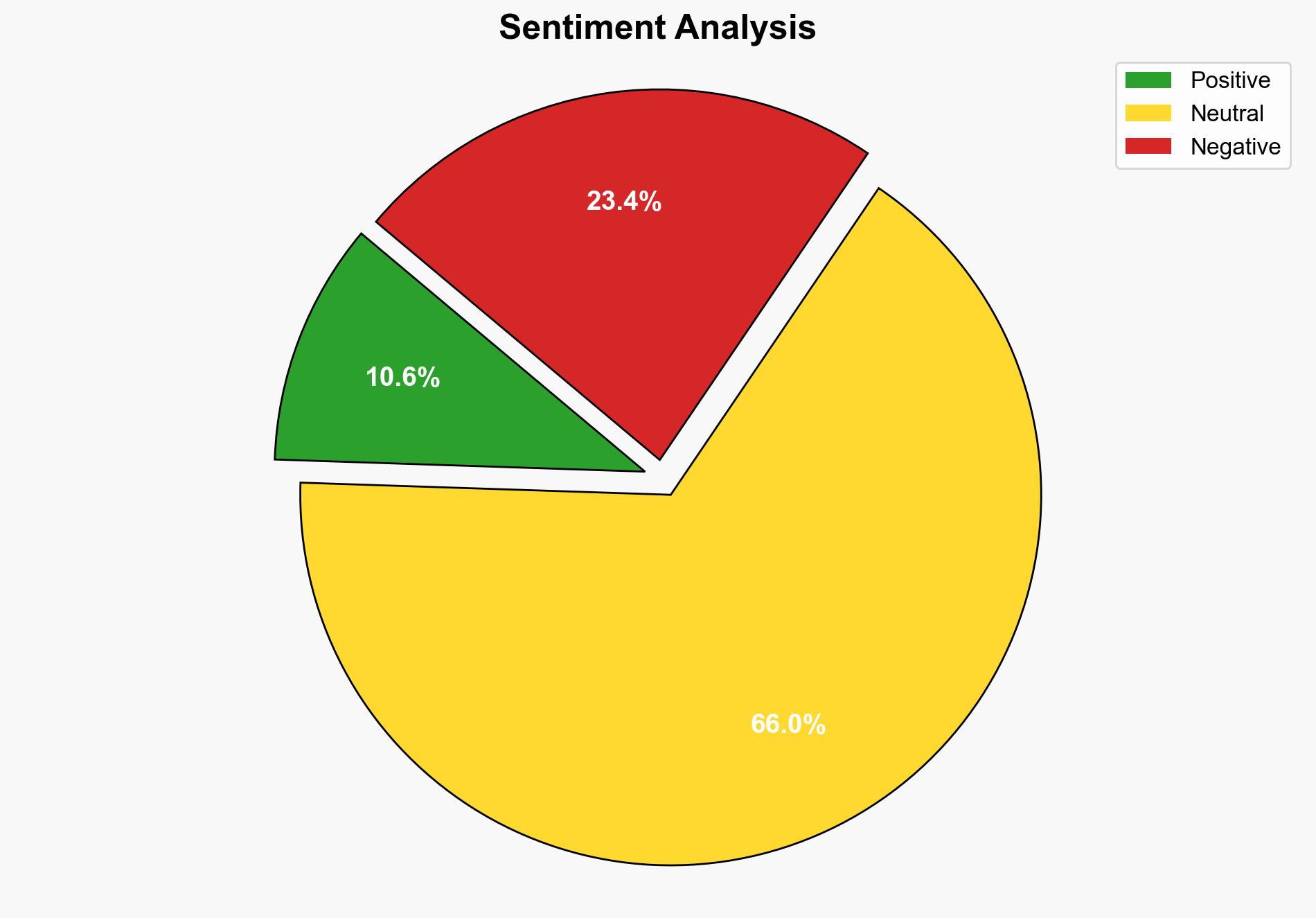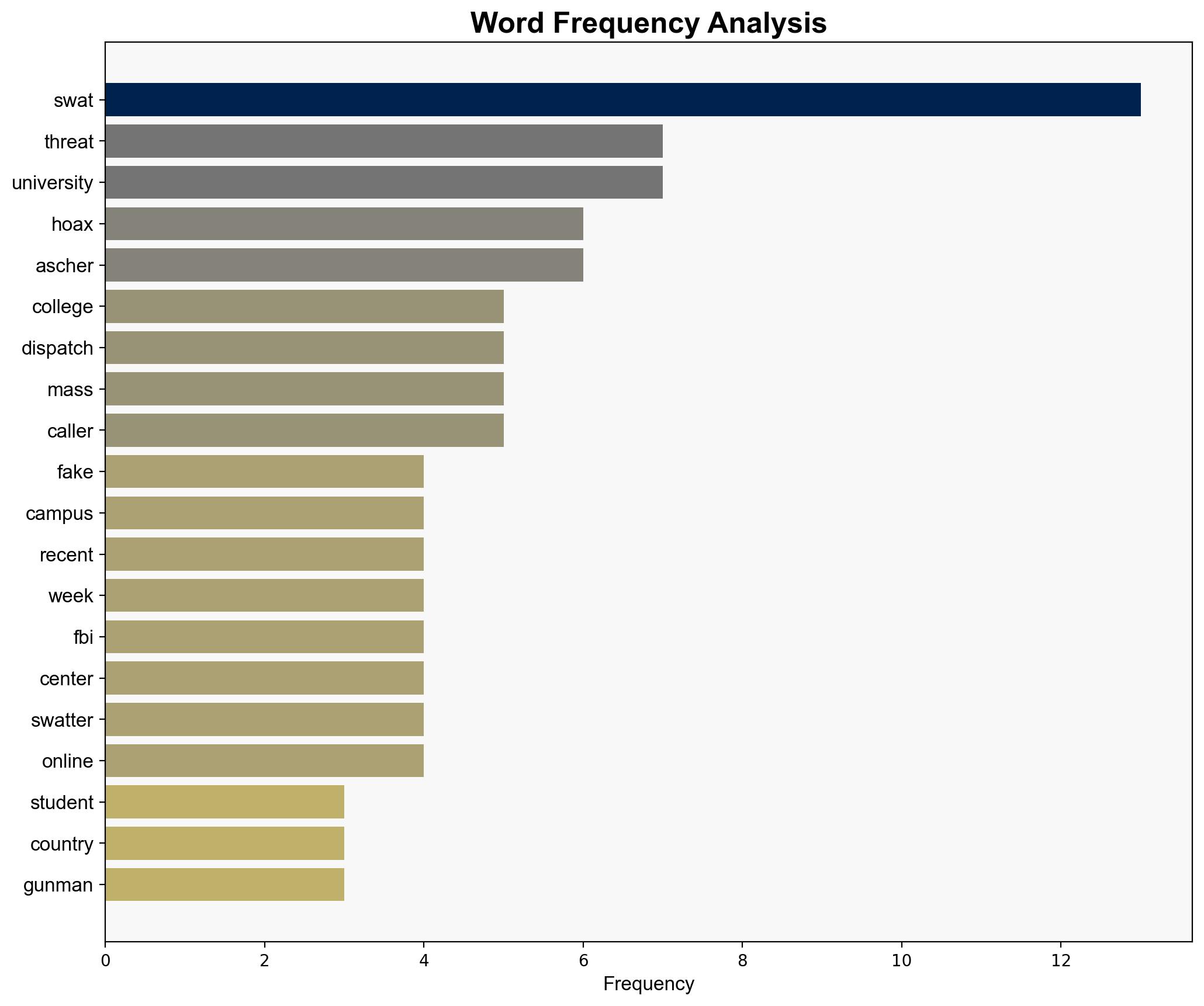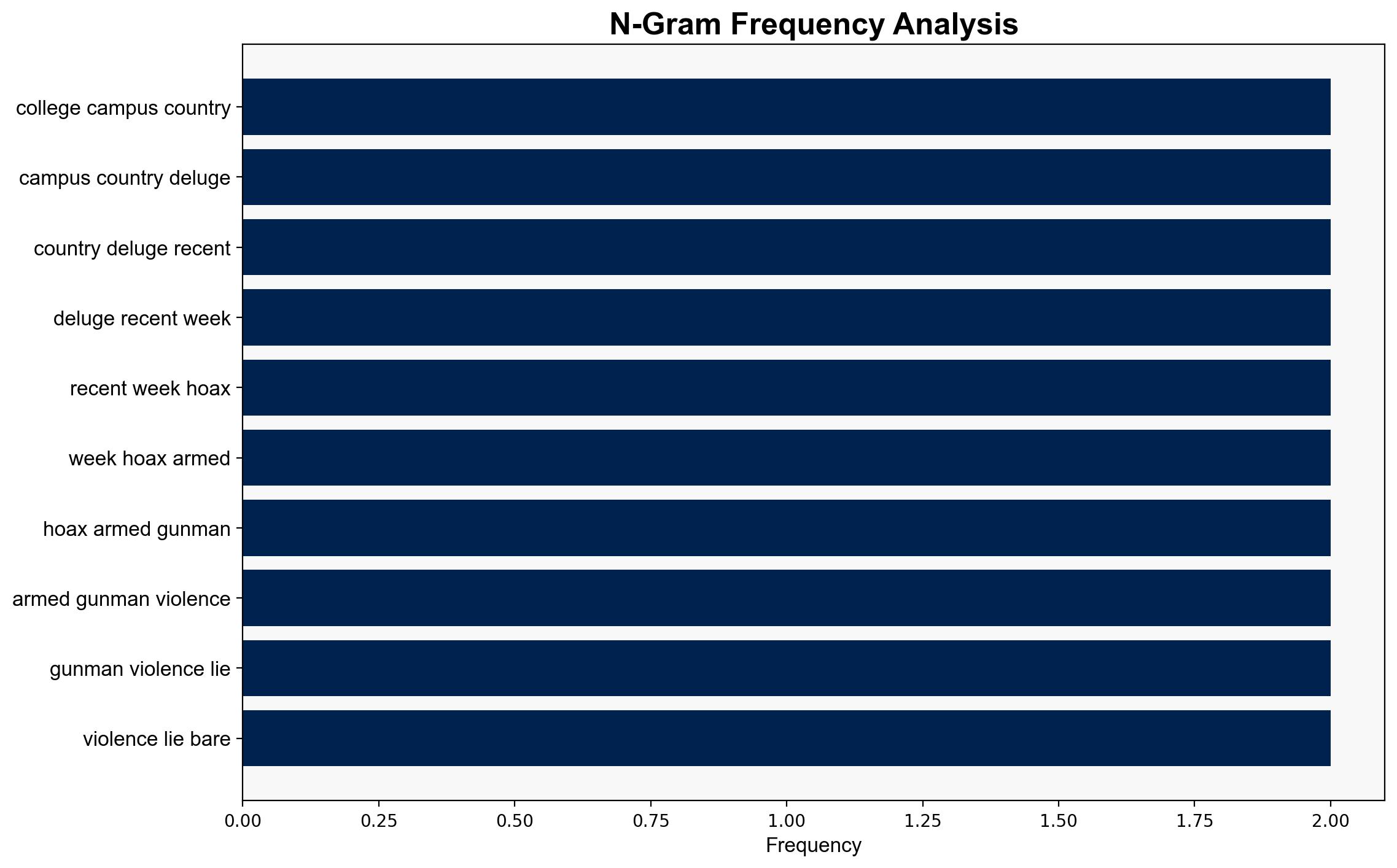Waves of fake threats to colleges are putting students on edge and testing dispatchers – ABC News
Published on: 2025-09-13
Intelligence Report: Waves of fake threats to colleges are putting students on edge and testing dispatchers – ABC News
1. BLUF (Bottom Line Up Front)
The most supported hypothesis is that the recent wave of fake threats to colleges is primarily driven by organized online groups engaging in “swatting” for entertainment and disruption. Confidence in this assessment is moderate, given the available evidence and historical patterns. It is recommended to enhance coordination between educational institutions, law enforcement, and cybersecurity experts to improve detection and response capabilities.
2. Competing Hypotheses
1. **Hypothesis A**: The fake threats are orchestrated by organized online groups, such as those involved in swatting, primarily for entertainment and to cause disruption.
2. **Hypothesis B**: The threats are part of a broader strategy by extremist groups to sow fear and test emergency response systems, potentially as a precursor to more serious attacks.
Using ACH 2.0, Hypothesis A is better supported by the evidence, including the historical context of swatting incidents, the use of online forums for coordination, and the behavioral patterns of the callers. Hypothesis B lacks direct evidence linking these incidents to extremist groups with a strategic agenda.
3. Key Assumptions and Red Flags
– **Assumptions**: It is assumed that the primary motivation is entertainment and disruption, not a precursor to actual violence. This relies on historical patterns of swatting.
– **Red Flags**: The lack of arrests and the difficulty in tracing calls due to technology like VoIP and VPNs indicate potential blind spots in current investigative capabilities.
– **Inconsistent Data**: The absence of direct claims of responsibility from known extremist groups raises questions about the strategic intent behind the threats.
4. Implications and Strategic Risks
– **Psychological Impact**: Continued fake threats could lead to desensitization, reducing the effectiveness of genuine emergency responses.
– **Operational Strain**: Law enforcement and educational institutions may face resource strains, impacting their ability to respond to actual threats.
– **Escalation Risk**: If not addressed, these incidents could embolden other groups to exploit the vulnerabilities in emergency response systems.
5. Recommendations and Outlook
- Enhance real-time information sharing between colleges and law enforcement to quickly identify and neutralize fake threats.
- Invest in technology to better trace and identify the origin of calls, potentially through partnerships with tech companies.
- Scenario-based projections:
- **Best Case**: Improved detection and response systems lead to a significant reduction in fake threats.
- **Worst Case**: Persistent threats lead to a major incident due to desensitization and resource depletion.
- **Most Likely**: Continued sporadic incidents with gradual improvements in response capabilities.
6. Key Individuals and Entities
– Charlie Kirk: Mentioned in the context of a threat at a Utah college campus.
– Wendy: Founder and CEO of the Global Project Against Hate and Extremism, provides context on the nature of these threats.
– Keven Hendrick: Cybercrime expert involved in teaching law enforcement about swatting.
7. Thematic Tags
national security threats, cybersecurity, counter-terrorism, regional focus





